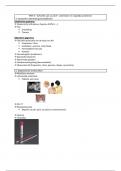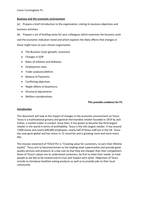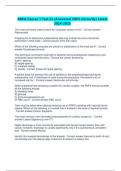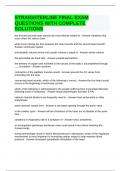Customer Journey
Digital Marketing
Digital marketing is an adaptive and technology-based process by which firms collaborate
with customers and partners to create, communicate, deliver and sustain value for all
stakeholders. (Kannan & Li, 2017)
What is the problem?
- Changing business landscape.
- Changing buying patterns.
- Evolving consumer needs.
- Increasing competition.
- Increasing marketing expenditures.
Good metrics inform good management (Ailawadi & Farris, 2016)
What should we use to evaluate our activities and improve the overall bottom-line?
Roadmap for the course:
Lemon &
Verhoef
(2016)
Dividing in 3 stages:
- Pre-purchase: considering what specifically need, search for more info
- Purchase stage: actual purchase, concerned about choices the consumer makes, how
the product is ordered, payment options, etc.
- Post-purchase: how consumers use or consume the product, engage with firm,
review, service requests, complains, etc.
Dynamic process within each stage touch points.
Explain how touch points collectively create individual points of contact between consumer
and brand into customer experience.
,Touch points – alternative classifications:
Owned media: media that the brand owns, website, social media,
the communication on it, etc.
Paid media: doesn’t own the channel but pays for it (ads).
Earned media: neither owned nor paid. Earned through
consumers, news outlet, any other third party.
Firm-initiated contacts: comes from the firm, push
communication.
Customer-initiated contacts: pull communication, customer
reaches out to interact with the brand.
Important if they provide us with distinct way to analyse consumer behaviour and
interactions and if they provide differential effects. Example: switching from FIC to CIC:
progress in the person decision process (purple text in image, also in later paper, Anderl).
Omnichannel
Customer journey & omnichannel
Research shoppers (omnichannel customers) are defined as customers that search in one
channel and purchase in another 43% of all shoppers (Neslin et al., 2006).
Showrooming: looking at the product in-store and purchasing it online (e.g. for a lower price)
Webrooming: looking at the product online and purchasing it in-store (e.g. to feel it first).
Multichannel vs. Omnichannel
Multichannel: the design, deployment, coordination and evaluation of the different channels
through which the marketer acquires, retains and develops customers (Neslin et al., 2006)
Focus on managing and optimizing the performance of EACH channel.
Omnichannel: the design, deployment, coordination and evaluation across the different
channels through which the marketer acquires, retains and develops customers (Ailawadi &
Farris, 2017) Focus on integrating activities ACROSS channels to correspond to how
consumers shop.
When we refer to channels, we refer to both channels of distribution and channels of
communication.
E.g. contact through social media and immediately click to buy.
Digital marketing & the customer journey
Manage the entire customer experience across touch points in a customer journey.
- Identify critical touch points (i.e. moments of truth) throughout the customer journey
that have most influence on key customer outcomes.
- The effect of an individual touch point may depend on when it occurs in the overall
journey, on the type of customer, on the type of product (hedonic/utilitarian), etc.
How do we measure the effectiveness of our digital marketing activities?
- The attribution problem: allocating effectiveness across different activities. How
much does one particular touch point or channel contribute to the overall purchase?
, Only one (e.g. the last) touch is
credited for the purchase.
All used channels are credited.
Allocating less credits if a channel is
used a long time ago.
Thinking about effectiveness of different channels is important for budget allocation.
The right metrics and insights in models come in handy.
Main pillars of the course:
- Online advertising: search, display (banner ads), social media.
- eWOM marketing.
Lecture 2 – 01/04/2020
From search to purchase
Understanding search
The zero moment of truth (ZMOT): moments in between
seeing a marketing stimulus and going to the store / point
of sale (usually to get more information, look for
discounts, compare brands etc.).
Traditionally, first moment of truth is at the shelf in the store, the second is at home when
you experience the product. Before the first comes the ZMOT: comparing reviews, videos,
etc. Goes on until afterwards second moment of truth, searching on installation, etc. Not
only about transaction but also about relationship and customer experience.
Consumer needs shape search behaviour and drive intent. 6 categories:
Relate to what
consumers need. In
understanding this,
able to provide
what serve
consumers
appropriately.
From search to purchase
Distribution









